Wyandotte Chicken – World’s Most Beautiful Chicken
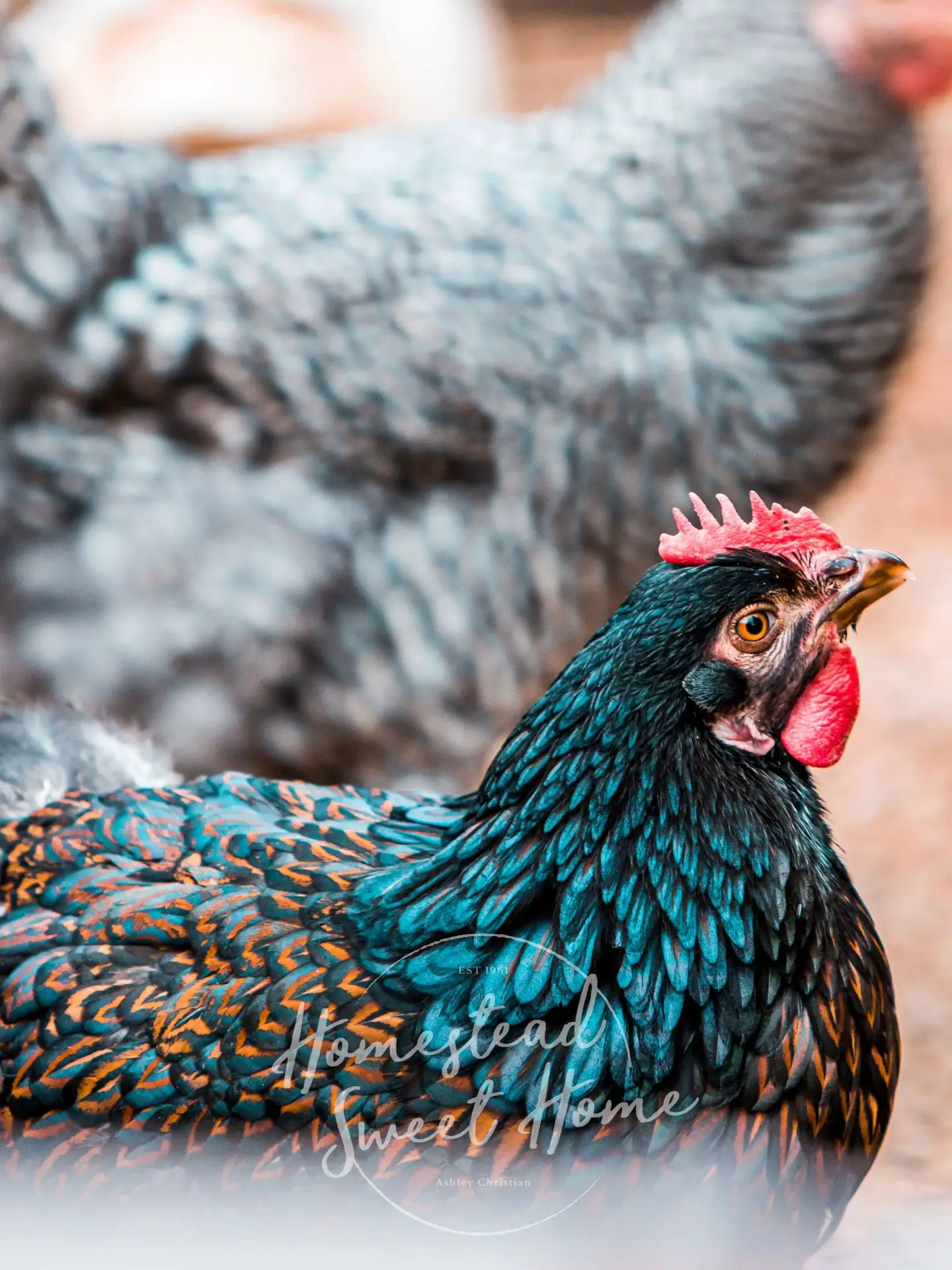
Wyandotte Chicken Quick Facts
- Known for: one of the most beautiful breeds of chicken with unique lacing in its feathers, they are good dual-purpose birds that are excellent for families and those in a neighborhood or urban settings
- Temperament: reserved, calm, docile, a bit aloof, easy-going, gentle, has a tendency to dominate other birds
- Eggs: 200 medium brown eggs each year
- Meat: good—reaches maturity at 20 weeks with 8.5 lb males and 6.5 lb females
- Climate: good heat tolerance and excellent cold tolerance, will continue laying through winter
- Broodiness: may sit on their eggs
Wyandotte Chicken Overview
The Wyandotte chicken comes in multiple beautiful colors, including:
- Blue Laced Red Wyandotte
- Silver Laced Wyandotte
- Gold Laced Wyandotte
- Columbian Wyandotte
- White Wyandotte
The Wyandotte is a great dual-purpose meat and egg-laying bird that does very well in cold climates and can continue to lay through winter. They are relatively easy good and good for families and urban settings.
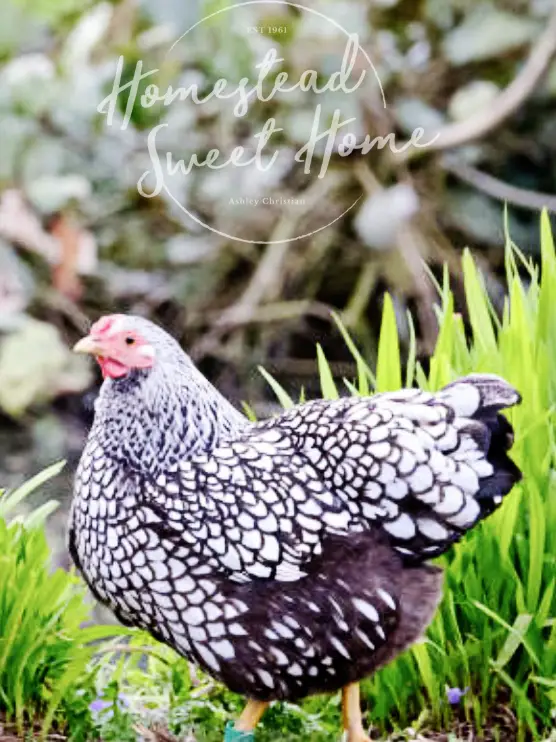
Pros and Cons of Wyandotte Chickens
- Pros: beautiful, friendly, good eggs layers, cold hardy, love foraging, make good mothers
- Cons: Not as smart as other breeds, not as large as other dual-purpose breeds, a little skittish and flighty, an easy target for hawks, a bit noisy
Wyandotte Chicken Appearance
- Size: large-sized birds 6.5 lb females and 8.5 lb males
- Colors: Blue Laced Red Wyandotte, Silver Laced Wyandotte, Gold Laced Wyandotte, Columbian Wyandotte, and White Wyandotte
- Egg Color: Wyandotte chickens of all varieties lay brown eggs
Though the Wyandotte Chicken comes in a variety of colors, the Silver Laced Wyandotte is the most famous and original Wyandotte that was bred to develop the other colors.
The Silver Laced Wyandotte has beautiful white and silver feathers that are laced on the edges by a glossy black-green color.

You can sex Wyandotte chickens 1 day after hatching by checking their wing feathers. A pullet’s wing feather will be longer than a cockerel’s. At weeks 1-2, you can usually tell them apart because the females have better-developed wing feathers, and feather more quickly in general. By weeks 4 to 6 you can notice males have more sturdy legs, wattles and combs are more developed, a shorter tail, and less feathering. Females at 4 to 6 weeks will have thin legs, a smaller comb, almost no wattle, and much more feathering with a longer tail.
The Gold Laced Wyandotte has a feather pattern similar to the Silver Laced Wyandotte, but it is a rich golden-red color laced with glossy black-green or black-blue feathers.
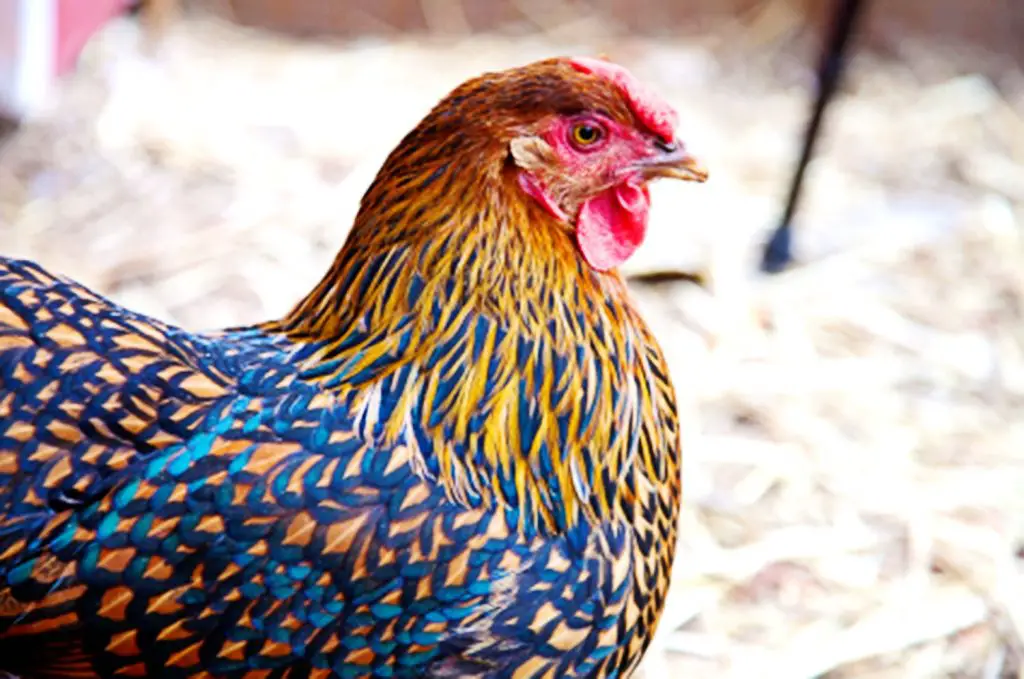
Perhaps the most stunning of all Wyandotte chickens, is the Blue Laced Red Wyandotte, with a rich golden-red color laced with blue on the feathers.
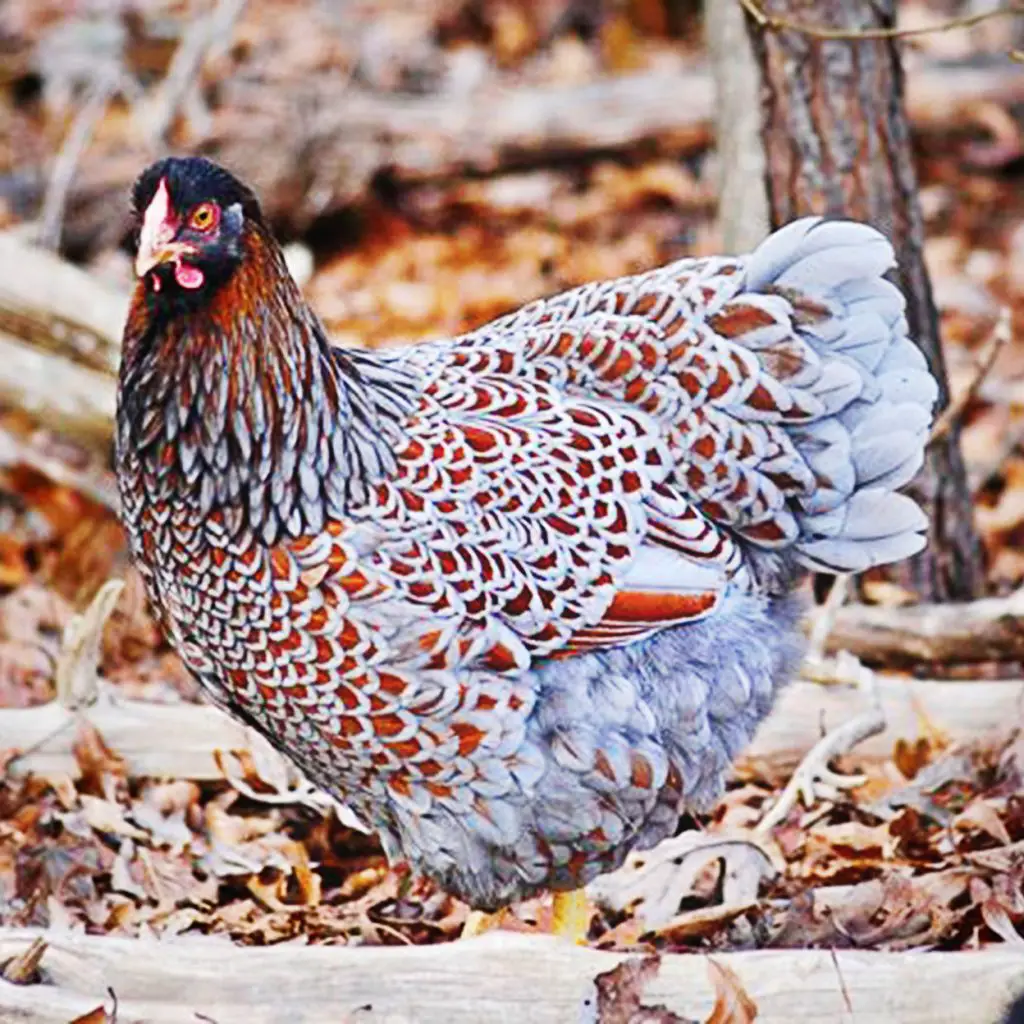
The Colombian Wyandotte is another beautiful variety with a white body contrasting with black neck and tail feathers that are laced in silver.
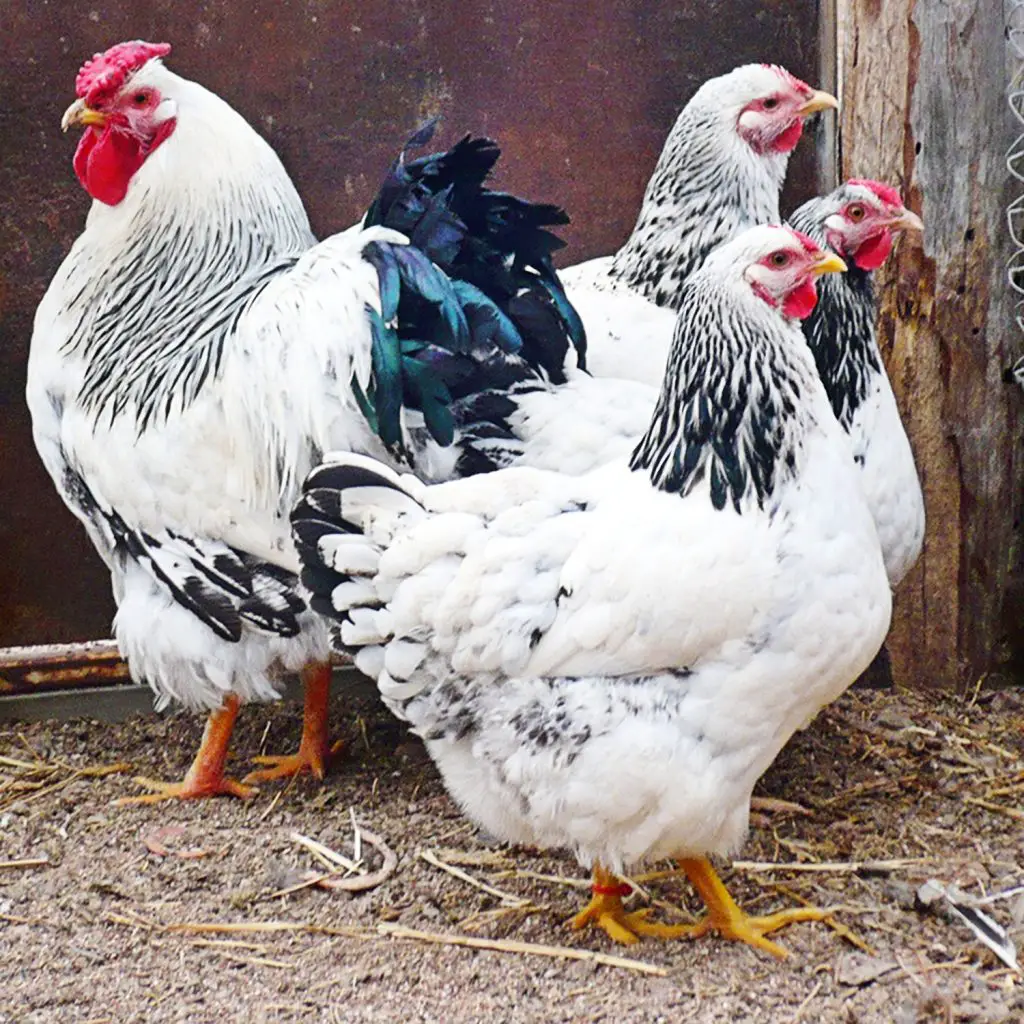
The all-White Wyandotte does not carry the same beauty as the other varieties of Wyandotte chicken do, but it still makes an excellent dual-purpose breed that is very winter hardy.
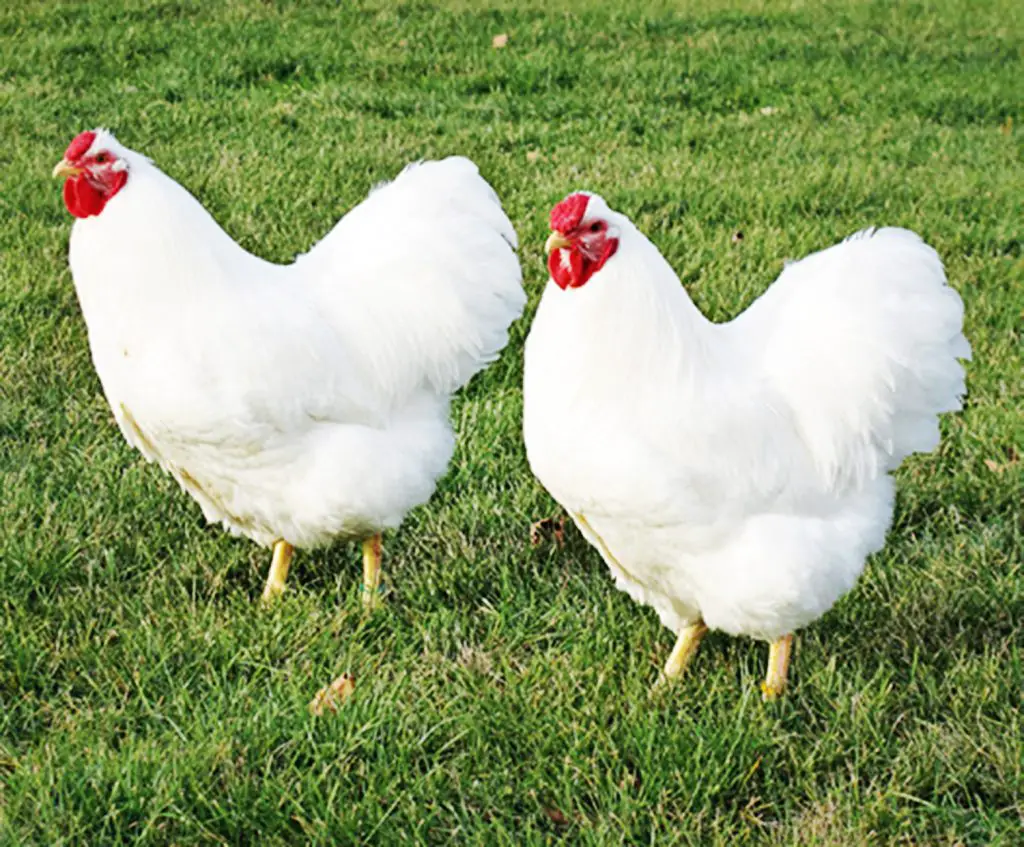
Wyandotte Chicken Egg Production
Wyandotte chickens are excellent prolific egg layers and will lay about 200 eggs per year. They are also very winter hardy because they were bred to thrive in the harsh Nothern winter weather. They will usually continue to lay through the cold winter months.
Their brown eggs size ranges from medium to large. Hens will reach full maturity at 20 weeks, and they should start laying shortly after. To keep your birds healthy and productive, keep their coop and run clean. You can also give them a separate bowl of oyster shells or crushed eggshells to consume as desired. These supplements will provide the extra calcium they require to lay eggs as well as possible.
Wyandotte Chicken Meat Production
The Wyandotte is an excellent meat-producing chicken. You can process them at around 20 weeks and get around 3 pounds of dressed meat off of them. You can also let them continue growing to get the most meat possible and butcher at 7 to 8 months old. If you are using Wyandottes for meat chickens, do keep in mind their feed costs and factor that into your cost and the timing of harvesting your chicken. After around 9 to 10 months, your chickens will become less tender and will be best used to stew meat or chicken stock.
Wyandotte Chicken Broodiness
A Wyandotte hen may take a very long while to go broody and set on a clutch of eggs. But once they do go broody, they make good mothers. If you want to hatch fertilized Wyandotte chicken eggs yourself, you can purchase an incubator that automatically turns your eggs, and controls the temperature and some models even control the humidity.
Because the Wyandotte does not go broody very often, this helps booster her egg production, since broody hens stop laying eggs. If your hen does go broody and hatch a clutch of eggs, you won’t have to worry about her chicks, as she will be an excellent mother.
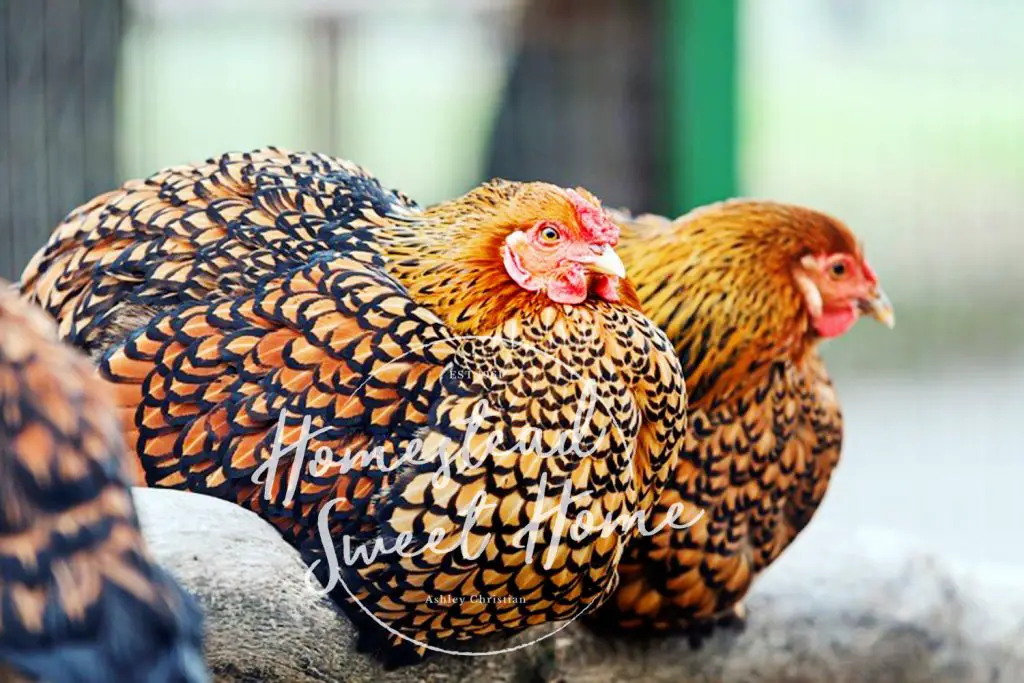
Wyandotte Chicken Temperament
Wyandotte chickens are friendly and calm. Because of this, they are good around kids. They’re overly affectionate though, and can even be a little skittish. If you handle them more as chicks, they will tend to be less skittish and more loving.
They are not thought of as the most intelligent breed of chicken. They also can be a bit bossy to the other chickens in the flock and usually end up higher on the pecking order because they won’t put up with other chickens bothering them. Wyandotte chickens are easily handled and usually happy to be around other people and chickens. They can be hand-fed treats and petted as long as they are given regular exposure to people.
They love to free-range and stay out late, but they do eventually come into the coop at night. They are also flighty and can often fly into trees or on top of the coop and perch there.
Wyandotte Chicken Noise Level
While some Wyandotte chicken owners say their chickens are noisy, others will say the opposite that they are a quiet breed. A lot likely depends on the owner’s definition of quiet, and that particular bloodline of Wyandotte.
Like all chickens, they will make an egg song when laying and alert for predators. Wyandotte’s do like to softy chat or talk with their owners.
Wyandotte Chicken Care
Luckily the Silver Laced Wyandotte, Gold Laced Wyandotte, Columbian Wyandotte, White Wyandotte, and the Blue Laced Red Wyandotte chickens are hardy and healthy chickens with relatively few health problems requiring extra care. There have been owners who have reported less than ideal coloring in some of the more rare breeds like the Blue Laced Red Wyandotte, so be sure to get them from a reputable breeder.
You will want to keep the coop and run clean and free of manure build-up and soiled bedding. Get your chicks vaccinated or use medicated chick starter, and put a few teaspoons of apple cider vinegar in their plastic waterer to boost their immune systems.
Wyandotte chickens are very cold-hardy, but you can take a few extra steps to keep them comfortable in the summer if you live in a warm climate. Make sure they have areas of shade, the coop has plenty of ventilation, and you can even provide a kiddie pool of water they can walk in to cool off.
To learn more about how to take care of your Wyandotte chickens, read our Ultimate Guide to Taking Care of Chickens.
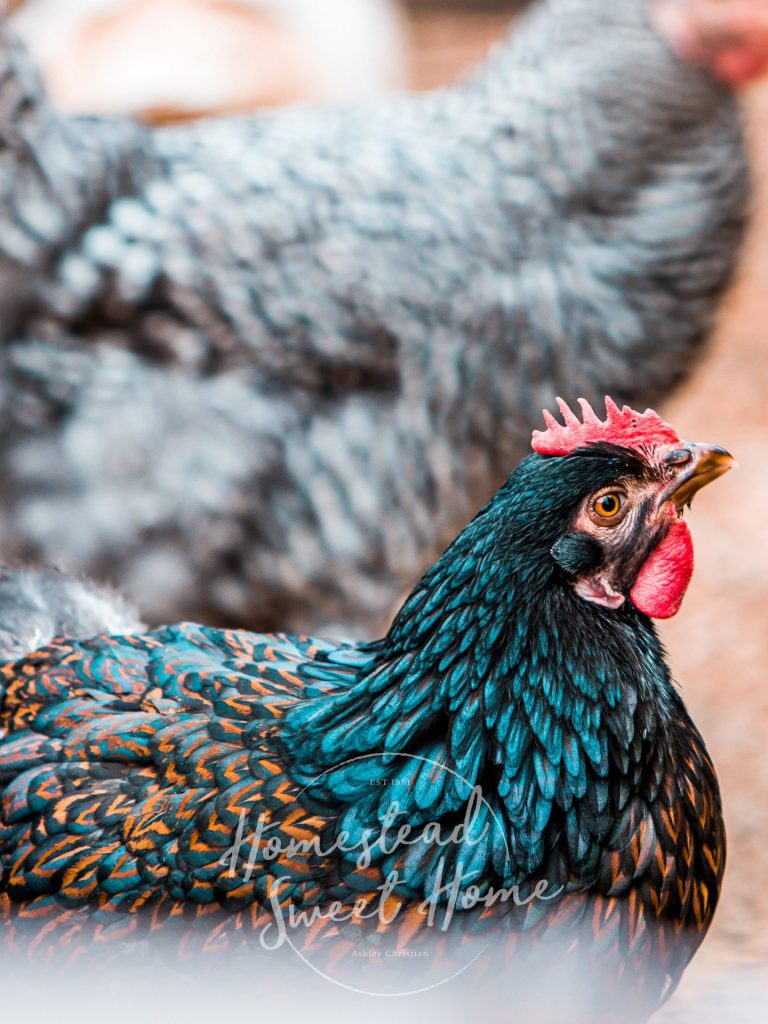
Wyandotte Chicken Housing
Wyandotte chickens need four square feet each inside their coop, and fifteen square feet each in their run.
Provide a roost in the coop for your chickens at night as Wyandotte chickens are flighty birds and will love to roost up high. Your hens will need about one nesting box for every three hens so they don’t get too crowded and their nesting boxes should be about 12×12.
Because Wyandotte chickens are not particularly bright or alert to predators, and because they handle confinement well, it may be best to keep them in a large enclosed run. The Silver Laced Wyandotte and the Gold Lace Wyandotte variety’s coloring helps them camouflage from aerial predators.
Feeding Wyandotte Chickens
Wyandotte chickens can be given standard chick starter from hatching till they reach maturity around 20 weeks. Layer feed contains 16% protein and added calcium to keep their eggshells healthy and strong. Roosters can eat the same feed as the hens.
You may give your Wyandotte chickens as much free-roaming space to eat plants and bugs as you can provide. They’ll also enjoy kitchen scraps (though there are some that are harmful, so avoid avocados, dried beans, junk or rotten food, green potato skins, citrus, onions, or tomato or potato leaves from the garden.) Giving them this variety will not only help you save money on their large feed requirements but will also keep them healthy and entertained.
Offering Wyandotte chickens grit is important for their health. Since chickens don’t have teeth, they need fine gravel or coarse sand in their gizzards to digest their food. Free-range chickens can usually naturally find this, but if your Wyandotte chickens don’t have access to pebbles, sand, or fine gravel, you’ll want to offer some supplemental grit.
Chicken scratch is also an important supplement to offer to Wyandotte chickens who are confined to a run or small space. Scratch is a mixture of whole grains that stimulates pecking and scratching behaviors which are soothing to chickens.
Chicken Treats: You don’t HAVE to give your Wyandotte chickens treats, but it’s a lot of fun! Mealworm and black soldier fly larva treats are excellent snacks for chickens that you can get from the feed store.
What is it like to own a Wyandotte Chicken?
The colorful varieties of the Wyandotte, such as the Silver Laced Wyandotte, Gold Laced Wyandotte, Columbian Wyandotte, and the Blue Laced Red Wyandotte are some of the most beautiful chickens you can own. They are eye candy for everyone who sees them. Another stand-out feature is their reliable egg laying even through the cold winter months. They are excellent layers of delicious, large brown eggs.
The Wyandotte also makes a good dual-purpose chicken. What many small backyard farms do is let their broody hens hatch eggs in the spring, or hatch their own throughout the year in an incubator. From these newly hatched chicks, you can easily sex the males and females, and raise the extra males on separate broiler feed and process them at around 20 weeks old.
This method will keep your flock of Wyandottes self-sustaining with plenty of meat and eggs for you and your family. To keep your bloodlines strong, you can introduce new Wyandottes to the bloodline every so often. This will keep the gene pool larger and help your chickens become less susceptible to disease. You can also look for show-quality chickens to purchase and introduce to your chicken’s bloodlines for superb genetics.
Wyandotte chickens are friendly and sweet, but not overly cuddly and can hold their own in the pecking order. They can be skittish at times, but if handled often starting as chicks, they will be warmer and even let you pet and hold them.
Wyandotte Chicken Breed History
The first Wyandotte chicken, the Silver Laced Wyandotte, was developed in the State of New York in the 1870s. Because they were bred in the North, they are extremely cold-hardy and will often continue to lay even through the harsh winter temps. They were named after the Wyandotte Nation even though they don’t have any direct historical ties to the tribe.
The Colombian Wyandotte was created by crossing a White Wyandotte and a Barred Plymouth Rock chicken. Its name comes from the Colombian Exhibition and World’s Fair in Chicago in 1893 where it was first shown.
The Golden Laced Wyandotte originated in Wisconsin, and the most recently developed color, my personal favorite, is the Blue Laced Red Wyandotte chicken.
Summary
Wyandottes are known for their stunning laced feathering, excellent egg-laying through winter, dual-purpose use as a meat bird and egg-laying breed, and their friendly disposition.
Do you own Silver Laced Wyandotte, Gold Laced Wyandotte, White Wyandotte, Columbian Wyandotte, or the rare Blue Laced Red Wyandotte chickens? Let us know in the comments below what your experience has been.

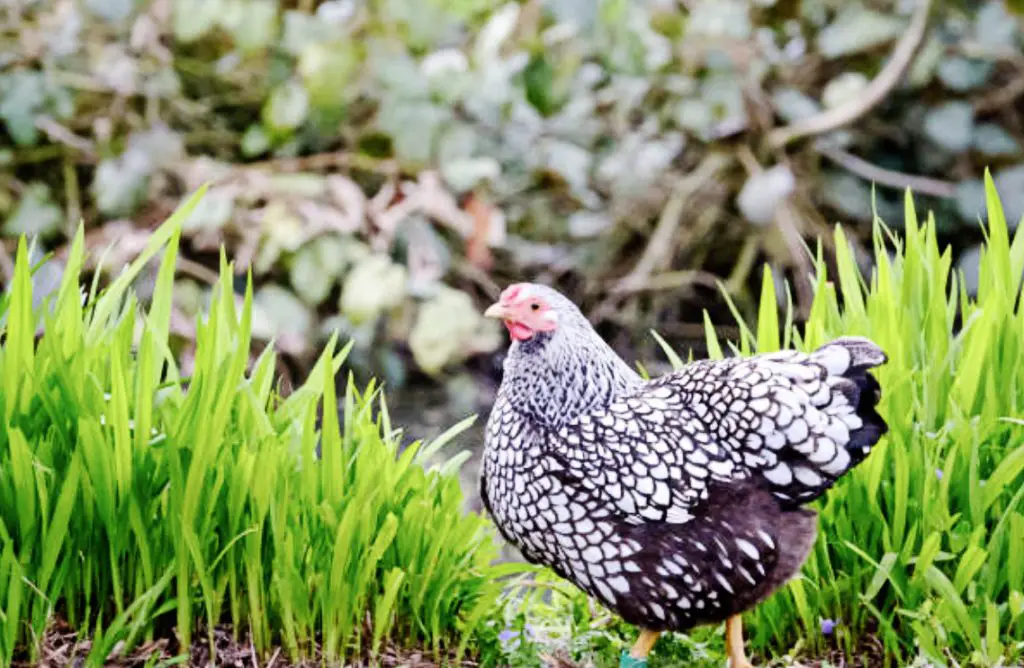
Leave a Reply